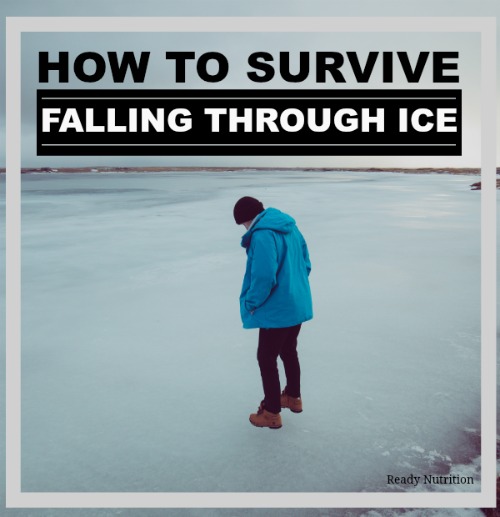Every year, people die from falling through the ice they thought was safe to cross. In near-frozen water, you have exactly 10 minutes to get out of the icy waters before your muscles become too cold to function. As well, your heart rate and blood pressure increase, so the chance of cardiac arrest and sudden death could occur. Know these preventative measures and how to survive if you find yourself in this type of emergency.
For any of you who have ever read Jack London’s “To Build a Fire,” the possibility of breaking through the ice and either drowning or dying from subsequent exposure to the elements does exist. In most situations that can turn deadly, the way to avoid them is through diligence and proper preparation. Water crossings in the winter are no different. Let’s jump into it…figuratively speaking!
Know Before You Go
Firstly, never trust the water to be frozen completely. If you follow this, you may say, then how can you ever cross the ice? Well, just take into consideration there are many variables that influence the ice thickness of rivers or lakes, and it’s always better to assume that there may be a problem…in this way, it doesn’t catch you unaware.
Take a look at your surroundings before starting to walk on the lake. Is there open water nearby or slush? These are indications of bad ice. Check the ice by cutting or drilling a hole in the ice to check for thickness.
How to Stay Safe
If you’re crossing a river, then you should have a rope that will reach to the other side at your crossing location. This is for several reasons. First, when crossing, you can use the rope as a lifeline if you wish. Secondly, the ice may be sturdy enough to cross, but without your gear. You may need a way to pull that gear behind you as you traverse the ice. If you wear a 75-lb. pack and you weigh 200 lbs., this could stress the ice if it isn’t frozen completely solid.
Next, you want to cross at exactly the shortest distance possible. This is common sense, as your wider expanses take more time to freeze. Another factor is the speed of the river. Sluggish rivers will freeze at least partially, down to about a depth of 3 feet or more. This is generally safe to cross over.
If the ice starts to crack, gauge where you are and see whether you can make it the rest of the way, or if you should turn back, and do it quickly. It helps to have a stout walking stick or pole with you. If you don’t walk with one, then cut one from a dead limb if possible. If a break happens, you can spread the pole out and keep from going under. If the crack looks bad and you may not have time, lay down on the ice spread-eagled. This will distribute your weight over the ice on a wider area, rather than having all of it at one point. Use your rope to pull yourself back across. This is where Yak-tracks or spikes/crepons will help you to use your feet as well.
Tie your rope off on one side. Walk it all the way across if you can. If it’s solid, when you reach the other side, tie it off there, and then go back. With heavy gear, you can then affix it to the rope and drag it behind you to the far side, or go to the far side and pull the gear all the way across (the preferred option). Snow also must be taken into consideration, as it can obscure what you see. Always err on the side of caution.
How to Save Yourself When You Fall Through the Ice
If you go through the ice and get wet, you must extricate yourself, and you don’t have a lot of time: adrenaline will work for a minute, and then the cold will set in. You must have a kit ready to use…firestarter, and emergency fuel to use. Get that fire going, and start to warm up. Therefore, it is best to follow the advice of the “Old Timer” in Jack London’s story: travel with a partner…as you both can help one another to cross, and if a mishap occurs.
Know What to Expect
- The frigid waters will knock the breath out of you.
- Control your breathing and try not to thrash around.
- Don’t remove clothing. The air pockets trapped in your clothes could actually help you stay afloat.
- The easiest way out is the way you came in, so turn in that direction for the fastest exit. This is likely where the strongest ice is.
- Kick your feet to the edge of the water and begin easing your way out of the ice.
- If you have a pocket knife or sharp tool, use it as traction to help pull yourself out.
- Once you are on stronger ice, roll your body or crawl toward safety until you feel your feet are strong enough to walk.
Watch this video on how to mitigate the cold shock response and survive falling through the ice.

This article was originally published at Ready Nutrition™ on March 19th, 2018







10 minutes ?
Hardly